
Belltown is the most densely populated neighborhood in Seattle, Washington, United States, located on the city's downtown waterfront on land that was artificially flattened as part of a regrading project. Formerly a low-rent, semi-industrial arts district, in recent decades it has transformed into a neighborhood of trendy restaurants, boutiques, nightclubs, and residential towers as well as warehouses and art galleries. The area is named after William Nathaniel Bell, on whose land claim the neighborhood was built.
The Pacific Coast Hockey Association (PCHA) was a professional ice hockey league in western Canada and the western United States, which operated from 1911 to 1924 when it then merged with the Western Canada Hockey League (WCHL). The PCHA was considered to be a major league of ice hockey and was important in the development of the sport of professional ice hockey through its innovations.
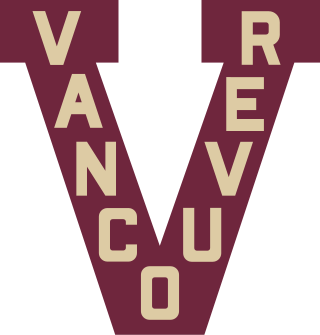
The Vancouver Millionaires were a professional ice hockey team that competed in the Pacific Coast Hockey Association and the Western Canada Hockey League between 1911 and 1926. Based in Vancouver, British Columbia, they played in Denman Arena, the first artificial ice surface in Canada and the largest indoor ice rink in the world at the time it opened.
The Seattle Metropolitans were a professional ice hockey team based in Seattle, Washington, playing in the Pacific Coast Hockey Association (PCHA) from 1915 to 1924. During their nine seasons, the Metropolitans were the PCHA's most successful franchise, as they went 112–96–2 in their nine years as a franchise. The Metropolitans also won the most regular season PCHA championships, winning five times, with Seattle finishing second on three other occasions. The Metropolitans played their home games at the 2,500 seat Seattle Ice Arena located downtown at 5th and University.

Climate Pledge Arena is a multi-purpose indoor arena in Seattle, Washington, United States. It is located north of Downtown Seattle in the 74-acre (30 ha) entertainment complex known as Seattle Center, the site of the 1962 World's Fair, for which it was originally developed. After opening in 1962, it was subsequently bought and converted by the city of Seattle for entertainment purposes. From 2018 to 2021, the arena underwent a $1.15 billion redevelopment; the renovation preserved the original exterior and roof, which was declared a Seattle Landmark in 2017 and was listed on the Washington Heritage Register as well as the National Register of Historic Places in 2018. The renovated venue has a capacity of 17,151 for ice hockey and 18,300 for basketball.

Wembley Park is a district of the London Borough of Brent, England. It is roughly centred on Bridge Road, a mile northeast of Wembley town centre and 7.6 miles (12 km) northwest from Charing Cross.
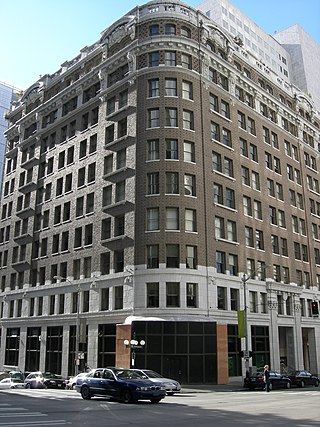
The Metropolitan Tract is an area of land in downtown Seattle owned by the University of Washington. Originally covering 10 acres (40,000 m2), the 1962 purchase of land for a garage for the Olympic Hotel expanded the plot to 11 acres (45,000 m2). The Metropolitan Tract is primarily located in a rectangle formed by Seneca St., Third Ave., Union St., and Sixth Ave.
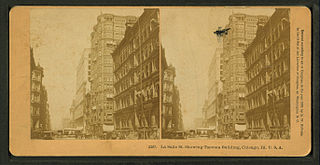
The architectural firm now known as Holabird & Root was founded in Chicago in 1880. Over the years, the firm has changed its name several times and adapted to the architectural style then current — from Chicago School to Art Deco to Modern Architecture to Sustainable Architecture.

The Nippon Kan Theatre is a former Japanese theater in Seattle, Washington, United States. It is located in the Kobe Park Building at 628 S. Washington Street, in the Japantown section of Seattle's International District.
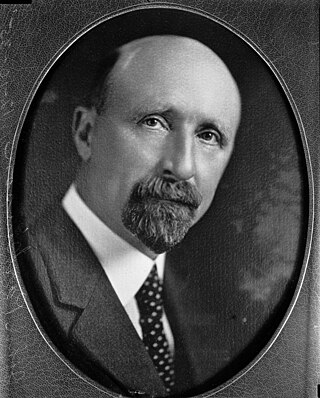
John and Donald Parkinson were a father-and-son architectural firm operating in the Los Angeles area in the early 20th century. They designed and built many of the city's iconic buildings, including Grand Central Market, the Memorial Coliseum and the City Hall.
The Seattle metropolitan area in the Pacific Northwest region of the United States is home to several professional and amateur sports teams. They include seven teams in major leagues, several in minor leagues, and collegiate programs for two National Collegiate Athletic Association (NCAA) Division I universities and one NCAA Division II university.

The Fairmont Olympic Hotel, originally The Olympic Hotel, is a luxury hotel in downtown Seattle, Washington. A historic landmark, the hotel was built on the original site of the University of Washington's first campus. The hotel opened in 1924, and in 1979, it was added to the National Register of Historic Places.

1200 Fifth, formerly the IBM Building, is a 20-story office building in the Metropolitan Tract, part of downtown Seattle, Washington, United States. The building was designed by Minoru Yamasaki, who also was architect of Rainier Tower on the corner diagonally opposite, and the World Trade Center in New York City. Construction on the building began in May 1963 and it was completed in October 1964.
Carl Frelinghuysen Gould also spelled Carl Freylinghausen Gould, was an architect in the Pacific Northwest, and founder and first chair of the architecture program at the University of Washington. As the lead designer in the firm Bebb and Gould, with his partner, Charles H. Bebb, Gould was responsible for many notable Pacific Northwest buildings, such as the original Seattle Art Museum and for the campus plan of the University of Washington.

Bebb and Gould was an American architectural partnership active in Seattle, Washington from 1914 to 1939. Partners Charles Herbert Bebb and Carl Freylinghausen Gould were jointly responsible for the construction of many buildings on the University of Washington's Seattle campus, as well as the Seattle Times Square Building (1914), Everett Public Library, U.S. Marine Hospital, and the Seattle Art Museum building in Volunteer Park.
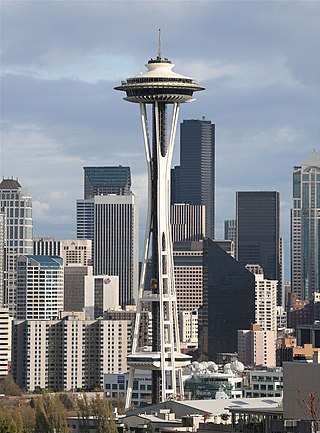
John Graham & Company, or John Graham & Associates was the name of an architectural firm, founded in 1900 in Seattle, Washington, by English-born architect John Graham (1873–1955), and maintained by his son John Graham Jr. (1908–1991).

The architecture of Seattle, Washington, the largest city in the Pacific Northwest region of the U.S., features elements that predate the arrival of the area's first settlers of European ancestry in the mid-19th century, and has reflected and influenced numerous architectural styles over time. As of the early 21st century, a major construction boom continues to redefine the city's downtown area as well as neighborhoods such as Capitol Hill, Ballard and, perhaps most dramatically, South Lake Union.

The Seattle Sea Hawks were a minor professional hockey team based in Seattle, Washington, playing at the Civic Ice Arena. The Sea Hawks began as a founding member of the North West Hockey League, playing in that league for its three-season existence from 1933 to 1936, before joining the second iteration of the Pacific Coast Hockey League until 1941. They were the NWHL champions in 1935–36. For their final season in 1940–41, the team was sold to new ownership and renamed the Seattle Olympics.
Ice hockey in Seattle, Washington includes professional teams as early as 1915, such as the Seattle Metropolitans, the first United States-based team to win the Stanley Cup. The city has been represented by various teams in the iterations of the Western Hockey League since 1944, of which the major junior Seattle Thunderbirds are the latest. Presently, the city has a National Hockey League franchise, the Seattle Kraken, who began play in the 2021–22 season.

The Skinner Building is an eight-story building in Seattle, in the U.S. state of Washington, which includes the historic 5th Avenue Theatre at its southern end. Part of the Metropolitan Tract, the structure is listed on the National Register of Historic Places for the architecture of the interior theatre and of the rest of the building. The exterior features an unadorned sandstone facade with a false loggia and red mission tile roof.















